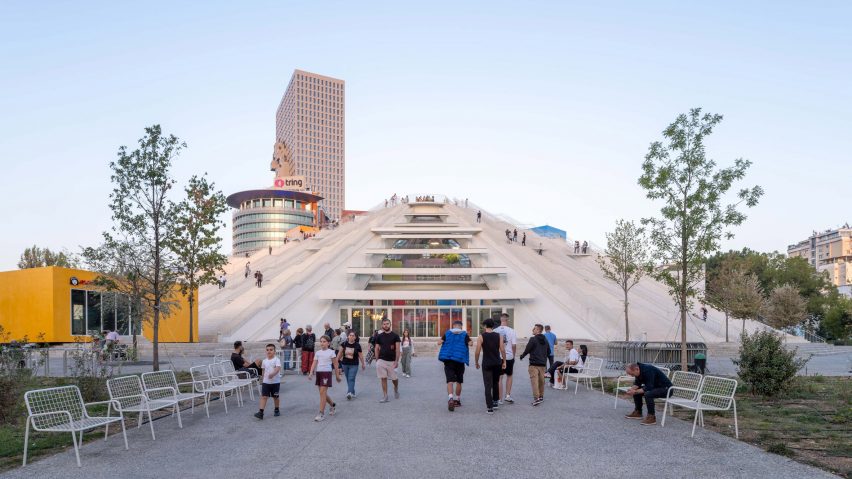
Pyramid of Tirana officially reopens as "monument for the people"
Dutch architecture studio MVRDV has added a stepped roof and bright-coloured boxes to a former museum dedicated to Albanian dictator Enver Hoxha in the centre of Tirana, Albania.
Working in collaboration with IRI Architecture, MVRDV carried out the alterations to transform the pyramid-shaped concrete structure from the 1980s into a cultural hub.
The studios opened up the internal structure and added numerous stairs to its roof to allow locals to symbolically climb the building, which was once the symbol of the communist state.
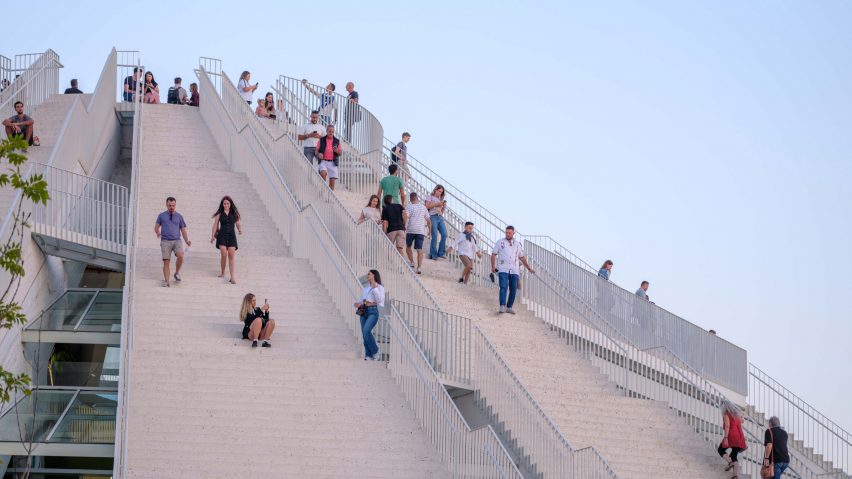
"The first time I saw the Pyramid being walked all over by the youth of Tirana, I was deeply touched by its symbolism and by its incredible optimism," says MVRDV founding partner Winy Maas.
"Keeping in mind this was the most expensive building the communist state had ever realised in a time when the oppressed Albanian population was living in poverty, we removed all symbols glorifying the dictatorship in our transformation," he continued.
"We did keep some of the original details so visitors are also aware of the building's dark past."
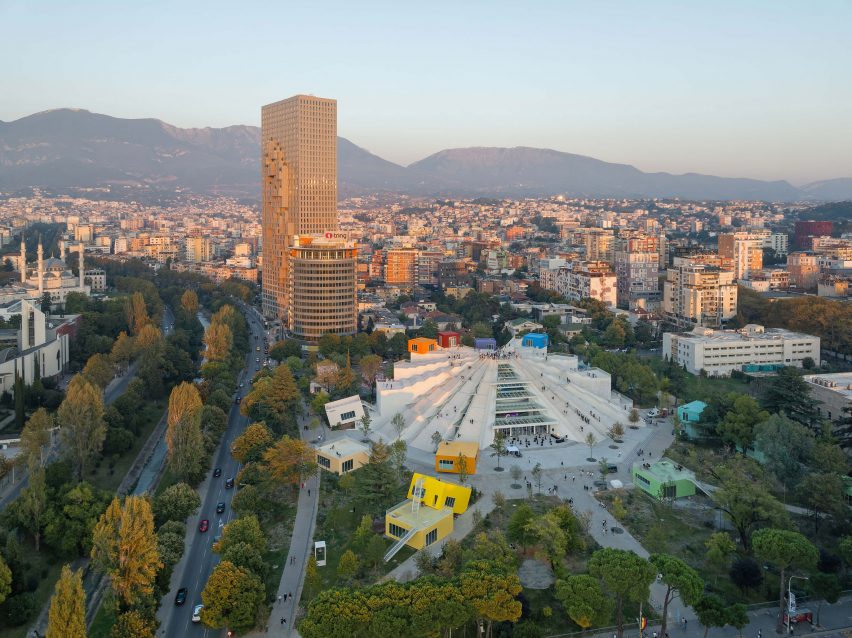
The building is now entirely covered in steps, as a nod towards the years when people climbed up and, sometimes, slid down the building's roof.
Between the stairs, a glass-fronted entrance and roof lights have been added along with a retained section of roof that can still be used as a slide.
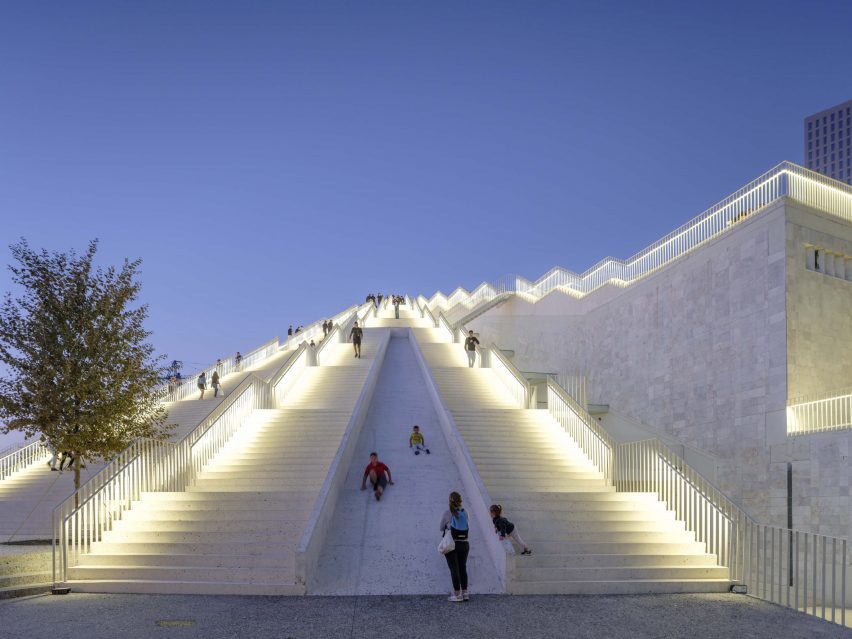
Originally opened in 1988 as a museum dedicated to Hoxha, who was dictator of Albania for 40 years, the Pyramid of Tirana closed after the fall of communism in 1991.
The pyramid was then used as a radio station, nightclub, conference venue and a base for NATO during the Kosovo War before becoming a ruin.
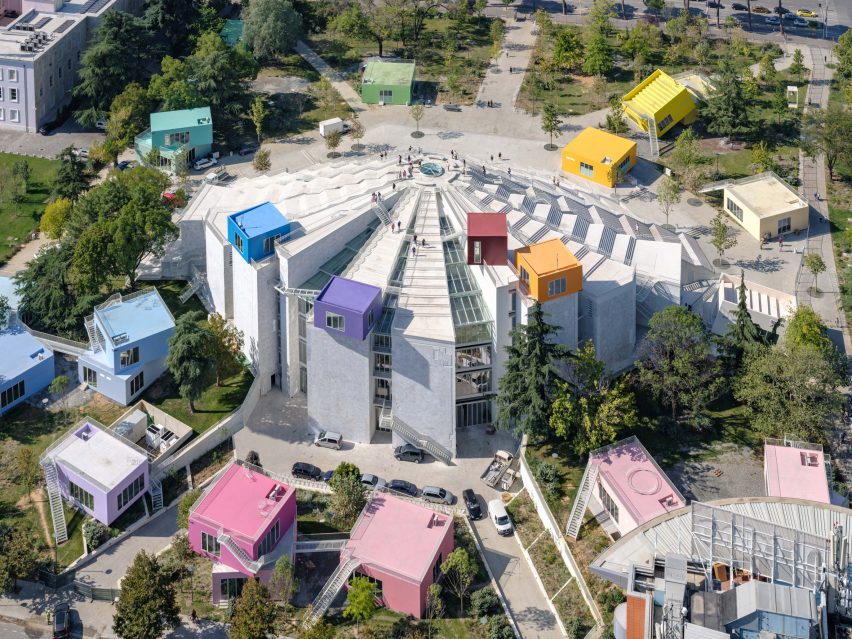
MVRDV aimed to capture this ruin-like quality by opening the Pyramid of Tirana up to the surrounding park and scattering colourful boxes over, within and around the structure.
Four of these boxes top the 20-metre-high pyramid, while several of those surrounding it are stacked two high to form two-storey interconnected structures.
"The structure is completely open as a ruin in the park, and all these boxes are 'squatting' in and around the structure," explained Maas.
"Once sardonically called the 'Enver Hoxha Mausoleum', the transformed Pyramid has now become a monument for the people and their ability to overcome and outlive dictators."
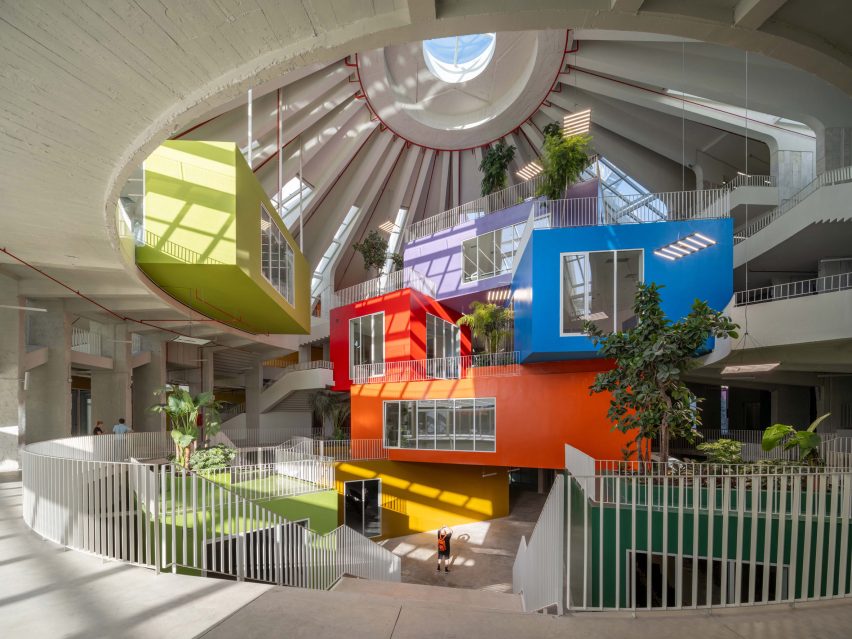
Within the 11,835-square-metre building, the coloured boxes are stacked in a pile under the glass oculus. They contain various functions including cafes, studios, workshops and offices for start-ups.
Around half of the boxes are used as classrooms for the non-profit educational institution TUMO Tirana, which runs an after-school educational program teaching 12 to 18-year-olds about modern subjects including software, robotics and animation.
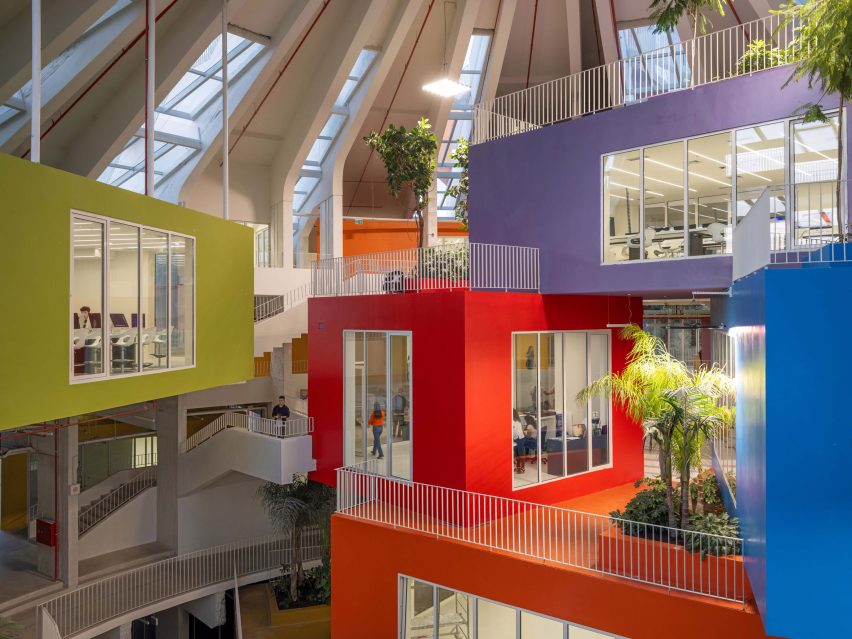
Rotterdam-based MVRDV was founded in 1991 by Maas along with Jacob van Rijs and Nathalie de Vries. The studio is also designing an 85-metre-high building in the city modelled on the bust of the country's prominent historical figure Gjergj Kastrioti and the country's tallest building, which will have a pixelated facade.
The buildings are part of a wave of new developments in the country's capital including a golden cube building designed by Italian architect Stefano Boeri Architetti and a "bow-tie-shaped" theatre designed by Danish studio BIG.
The photography is by Ossip van Duivenbode.
Project credits:
Architect: MVRDV
Founding partner in charge: Winy Maas Partner: Stefan de Koning
Design team: Ronald Hoogeveen, Stavros Gargaretas, Guido Boeters, Angel Sanchez Navarro, Boris Tikvarski, Jasper van der Ven, Mirco Facchinelli, Manuel Magnaguagno, Leo Stuckardt
Visualisations: Antonio Luca Coco, Luca Piattelli, Jaroslaw Jeda, Luana La Martina, Gianlorenzo Petrini
Strategy and Development: Willeke Vester, Daan van Gool Copyright: MVRDV Winy Maas, Jacob van Rijs, Nathalie de Vries
Partners: Albanian-American Development Foundation (AADF), Municipality of Tirana; Albania Ministry of Culture
Education partner: TUMO Tirana
Co-architect: IRI Architecture
Contractor: Fusha shpk
Project coordination: Albanian-American Development Foundation (AADF) Landscape architect: iRI; JESHILE; MVRDV
Structural engineer: ARUP; Gentian Lipe; Luan Murtaj
MEP: ARUP; IRI Architecture; Nikolin Risilia; Artur Dado; Isuf Kore
Monuments expert: Daniel Gjoni
Cost calculation: IRI Architecture
Environmental advisor: Arben Liçi